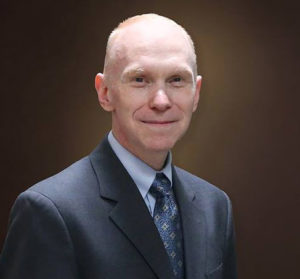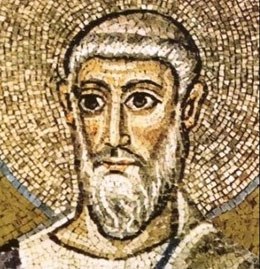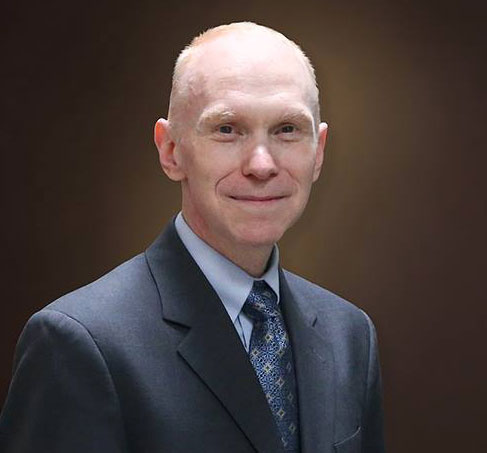Podcast: Play in new window | Download (Duration: 29:23 — 20.3MB) | Embed
Subscribe: Apple Podcasts | Spotify | Amazon Music | Android | Pandora | iHeartRadio | JioSaavn | Podchaser | Gaana | Podcast Index | Email | TuneIn | Deezer | Anghami | RSS | More

St. Peter Chrysologus – The Doctors of the Church: The Charism of Wisdom with Dr. Matthew Bunson
- Born: 406 AD, Imola, Italy
- Died: July 31, 450 AD
Dr. Matthew Bunson and Kris McGregor discuss St. Peter Chrysologus, a Doctor of the Church known as the “Doctor of Homilies” due to his exceptional preaching skills. Chrysologus, who lived from around 380 to 450 AD, was noted for his brief, clear, and impactful homilies that conveyed deep theological truths concisely to avoid boring his congregation. His teachings emphasized prayer, fasting, and mercy, which he believed were interdependent and vital for a steadfast faith and virtuous life.
Declared a Doctor of the Church in 1729 by Pope Benedict XIII, Chrysologus was honored during a period of rationalism and skepticism in Europe. His ability to distill complex theological concepts into accessible and inspiring messages made him an essential figure during the Enlightenment. Despite the turmoil of his era, including the fall of the Western Roman Empire and the rise of various heresies like Arianism and Monophysitism, Chrysologus remained a steadfast defender of orthodox Christian doctrine.
Chrysologus’s significant influence is highlighted by his relationship with Pope Leo the Great and his response to the heretic Eutyches, which emphasized papal primacy and the importance of unity in the Church. His eloquence and gentle nature, combined with his theological depth, made his homilies resonate deeply with his congregation and contributed to his lasting legacy in the Church. The podcast underscores the relevance of Chrysologus’s teachings in today’s context of social and religious challenges, encouraging listeners to draw inspiration from his life and work.
Discerning Hearts Reflection Questions
- Understanding the Impact of Brevity in Homilies: How can the example of St. Peter Chrysologus’s concise and clear homilies inspire contemporary preachers to communicate more effectively?
- Emulating the Zeal for Truth: In what ways can we, as modern Catholics, emulate St. Peter Chrysologus’s zeal for defending and teaching the true faith amidst today’s skepticism and rationalism?
- Integrating Prayer, Fasting, and Mercy: How can we incorporate St. Peter Chrysologus’s teaching on the interdependence of prayer, fasting, and mercy into our daily spiritual practices?
- Importance of Papal Primacy: Why is understanding and respecting papal primacy, as emphasized by St. Peter Chrysologus, important for maintaining unity and orthodoxy in the Church today?
- Living the Faith Through Action: Reflect on a specific way you can live out your faith in action, following the example of St. Peter Chrysologus’s life and teachings.
- Addressing Modern Heresies: What are some modern-day heresies or false teachings that the Church faces, and how can we effectively respond to them using the wisdom of St. Peter Chrysologus?
- Importance of Holiness in Relationships: How does the relationship between St. Peter Chrysologus and other Church leaders like Pope Leo the Great illustrate the importance of fostering holy and supportive relationships within the Church community?
- Lessons from Historical Context: How can the historical context of St. Peter Chrysologus’s time help us understand and address the challenges facing the Church in our current era?
- Role of Homilies in Worship: Why is it crucial for homilies to be integrated within the context of worship and liturgy, as St. Peter Chrysologus exemplified?
- Personal Spiritual Growth: Reflect on a recent homily that deeply moved you. How did it inspire your spiritual growth, and how can you seek to apply its message in your life?
For more on St. Peter Chrysologus and his teachings
 From Wikipedia:
From Wikipedia:
“Peter was born in Imola, where Cornelius, bishop of Roman Catholic Diocese of Imola, baptized him, educated him, and ordained him a deacon. He was made an archdeacon through the influence of Emperor Valentinian III. Pope Sixtus III appointed Peter as Bishop of Ravenna (or perhaps archbishop) circa 433, apparently rejecting the candidate whom the people of the city ofRavenna elected. The traditional account, as recorded in the Roman Breviary, is that Sixtus had a vision of Pope Saint Peter the Apostle and Saint Apollinaris of Ravenna, the first bishop of that see, who showed Sixtus a young man, the next Bishop of Ravenna. When a group from Ravenna arrived, including Cornelius and his archdeacon Peter from Imola, Sixtus recognized Peter as the young man in his vision and consecrated him as a bishop.
People knew Saint Peter Chrysologus, the Doctor of Homilies, for his short but inspired talks; he supposedly feared boring his audience. His piety and zeal won universal admiration. After hearing oratory of his first homily as bishop, Roman Empress Galla Placidia supposedly gave him the surname Chrysologus, meaning “golden-worded.” Empress Galla Placidia patronized many of projects of Bishop Saint Peter.
In his extant homilies, bishop Peter explained Biblical texts briefly and concisely. He also condemned Arianism and Monophysitism as heresies and explained beautifully the Apostles’ Creed, the mystery of the Incarnation, and other topics in simple and clear language. He dedicated a series of homilies to Saint John the Baptist and the Blessed Virgin Mary. Peter advocated daily reception of Eucharist. He urged his listeners to confide in the forgiveness offered through Christ. He shared the confidence of Saint Pope Leo I the Great (440-461), another doctor of the Church.
A synod held in Constantinople in 448 condemned Eutyches for Monophysitism; Eutyches then appealed to Saint Peter Chrysologus but failed in his endeavour to win the support of the Bishop. The Acts of the Council of Chalcedon(451) preserves the text of letter of Saint Peter Chrysologus in response to Eutyches; Peter admonishes Eutyches to accept the ruling of the synod and to give obedience to the Bishop of Rome as the successor of Saint Peter.
Archbishop Felix of Ravenna in the early eighth century collected and preserved 176 of his homilies. Various authors edited and translated these works into numerous languages.
Death and veneration
St Peter died circa or after 450 during a visit to Imola, the town of his birth. Older reference books say he died on 2 December, but a more recent interpretation of the ninth-century “Liber Pontificalis Ecclesiae Ravennatis” indicated that he died on 31 July. When in 1729 he was declared a Doctor of the Church, his feast day, not already included in the Tridentine Calendar, was inserted in the Roman Catholic calendar of saints for celebration on 4 December. In 1969 his feast was moved to 30 July, as close as possible to the day of his death, 31 July, the feast day of Saint Ignatius of Loyola.”
For more from Dr. Matthew Bunson, check out his Discerning Hearts page.
Dr. Matthew E. Bunson is a Register senior editor and a senior contributor to EWTN News. For the past 20 years, he has been active in the area of Catholic social communications and education, including writing, editing, and teaching on a variety of topics related to Church history, the papacy, the saints and Catholic culture. He is faculty chair at Catholic Distance University, a senior fellow of the St. Paul Center for Biblical Theology, and the author or co-author of over 50 books including The Encyclopedia of Catholic History, The Pope Encyclopedia, We Have a Pope! Benedict XVI, The Saints Encyclopedia and best-selling biographies of St. Damien of Molokai and St. Kateri Tekakwitha.


